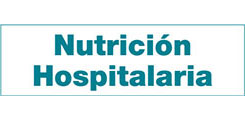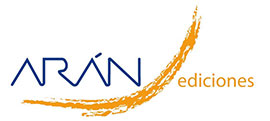Trabajo Original
Assessment of food consumption, energy and protein intake in the meals offered in four Spanish nursing homes
 Número de descargas:
30939
Número de descargas:
30939
 Número de visitas:
3957
Número de visitas:
3957
 Citas:
0
Citas:
0
Compártelo:
Background/objective: The elderly, and especially those attending nursing homes, are at great risk from certain nutritional deficiencies. The aim of this study was to examine the percentage of energy wasted, energy and protein intake and percentage consumed of meal offered by a group of healthy institutionalized elderly in four nursing homes in Spain. Design and methods: This was a multicentre observational study of a sample of the institutionalized population over the age of 65. Our final sample comprised a total of 62 individuals. Dietary data were collected using double weight method for each meal during 21 days. We calculated the following consumption variables: percentage of food consumed (% food consumed) for each subject in each meal. We also calculated the energy intake (kcal/day), the wasted energy (kcal/day), the protein intake (g protein/ day) and the energy density (kcal/g meal) for each of the meals eaten. To analyse the overall differences we used analysis of variance test (ANOVA). The significance level used was 0.05 (p < 0.05). Results: The largest meals were lunch (781 g/day [728.4, 833.6]) and dinner (653 g/day [612.1, 693.9]). The percentage of total consumption was 81.9% [79.3, 84.6]. The average energy consumption was 1,575.4 kcal/day [1,508.3, 1,642.6]. The percentage of caloric distribution varied depending on the center. The highest percentage of wasted food was found in the main meals. Forty four percent did not consume enough energy to meet the recommended intakes. Protein intake was 63.6 g protein / day [61.2, 66.1]. 12.5% of women and 4.55% of men did not consume the recommended intakes for the elderly. Breakfast and the bedtime snack had the highest energy density with 1.10 [0.9, 1.25] and 1.04 [0.9, 1.08] kcal/g food served respectively [Energy density]. Discusion/conclusions: The best strategy for increasing the energy intake of the institutionalized elderly without raising the amount of food that is rejected may be to provide higher energy density foods in the same serving sizes.
Palabras Clave: Nursing homes. Aged. Diet records. Nutritional requirements.
Artículos Relacionados:
Trabajo Original: Comparación de las recomendaciones de expertos sobre nutrición clínica en pacientes hospitalizados con COVID-19
Jéssica Martínez Rodríguez , María Roca Fontbona
Trabajo Original: Nutritional guidance, monitoring, and supplementation before and after bariatric surgery — Are we doing this correctly?
Mariane Marques da Silva , Dan Linetzky Waitzberg , Regiane Macedo Silva Dipppolito , Priscila Sala , Samira Barcelos , Marco Aurélio Santo , Ana Cristina Martinez , Raquel Susana Torrinhas
Revisión: Burns, metabolism and nutritional requirements
Trabajo Original: The effect of a modified meat product on nutritional status in institutionalized elderly people
Trabajo Original: Prevalencia de desnutrición e influencia de la suplementación nutricional oral sobre el estado nutricional en ancianos institucionalizados
Trabajo Original: Evaluation of the mini-nutritional assessment short-form (MNA-SF) among institutionalized older patients in Spain
Trabajo Original: La polimedicación en mayores institucionalizados; su efecto sobre los niveles de vitamina B12, folato y homocisteína
Trabajo Original: Presencia de malnutrición y riesgo de malnutrición en ancianos institucionalizados con demencia en función del tipo y estadío evolutivo
Trabajo Original: Compliance with dietary and nutrient recommendations in the European Prospective Investigation into Cancer and Nutrition (EPIC)-Granada cohort at recruitment
Trabajo Original: Micronutrient recommendations and policies in Spain; the cases of iodine, folic acid and vitamin D
Trabajo Original: Estudio nutricional de un equipo de fútbol de tercera división
Trabajo Original: Software application for the calculation of dietary intake of individual carotenoids and of its contribution to vitamin A intake
Trabajo Original: Cambios en la composición corporal en función del grado de demencia en un grupo de ancianos institucionalizados
Trabajo Original: Algorithm for the early diagnosis of vitamin B12 deficiency in elderly people
Revisión: Estimación del gasto energético en el paciente quemado mediante la utilización de ecuaciones predictivas; revisión bibliográfica
Trabajo Original: Is the risk of refeeding syndrome a problem in reaching nutritional requirements? A cohort of patients on enteral nutrition support
Elena M. Sandoval-Cartagena , Martha Guevara-Cruz , Alfonso Rivera-Duarte , Marcela Hernández-Ortega , Aurora E. Serralde-Zúñiga
Trabajo Original: Adequacy of energy and nutrient intake in patients with heart failure
Revisión: Reto clínico 2. Digestivo. Dismotilidad intestinal más allá del sobrecrecimiento bacteriano en el intestino delgado. El reto de alcanzar los requerimientos nutricionales
Josefina Olivares Alcolea , María José Bosque López
Artículos más populares
Revisión: Inteligencia artificial generativa ChatGPT en nutrición clínica: avances y desafíos
ChatGPT y otras herramientas de inteligencia artif...
Revisión: Suplementación con micronutrientes y sus beneficios: ¿por qué y cuándo?
Introducción: los micronutrientes participan en la...
-
Licencia creative commons: Open Access bajo la licencia Creative Commons 4.0 CC BY-NC-SA
https://creativecommons.org/licenses/by-nc-sa/4.0/legalcode




